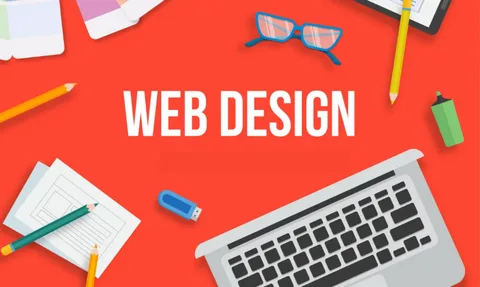Web Design is the process of creating a website that meets its audience’s needs. It involves understanding the structure of a site, using coding languages and applying design programs.
A business’s online presence is often the first interaction a potential client has with the brand. It is important that it offers consistency and projects trust.
Usability
Usability is a crucial part of web design. It ensures that users can complete a task or find information quickly and easily. It also allows them to make sense of the content. Web pages that are not well designed can lead to confusion, frustration and abandonment of the site.
Modern usability concepts are generally based on two scientific studies – Hick’s Law and Fitts’ Law. These laws apply to the way people navigate websites and other products. They show that users scan pages and skim-read text, so you need to give them the information they want in a clear and concise manner. You should also avoid excessive use of visuals as this can confuse the user and slow down the page load time.
While usability may seem simple enough, it can be difficult to implement correctly. For example, the human brain cannot process complex images as quickly as text. In addition, users can become confused by a website that has too many options. Taking the time to review user feedback and testing designs can help you develop a more usable website.
A website’s usability is increasingly becoming a hygiene factor in the internet marketplace. If a website is not usable, it will not be around for long, as users will find alternatives that allow them to meet their goals faster and more effectively.
Visual Appeal
We’re often admonished to not judge books by their covers, but when it comes to websites, visual appeal plays a major role. It takes visitors less than a second to make a first impression and form an opinion of your website that may carry over in future visits. Moreover, your website’s aesthetics will impact your brand’s credibility and trustworthiness.
Web design involves combining a range of elements to create an interface that optimizes user experience and drives conversion. These include images, fonts, spacing, layout and color. Professional designers are well aware of the importance of visual appeal and use a variety of programs to design aesthetically pleasing websites. The latest trend in visual design is flat design, which strips away the hyper-realistic representation of objects and focuses on clean lines and simple areas of color.
The most effective way to determine whether your website is visually appealing is through concept testing. These online tools are available for free or at very affordable prices and allow you to test multiple designs before launching into development.
Research has shown that a website’s visual appeal can impact users’ opinions of a company’s credibility and trustworthiness. However, determining which visual elements are most important for your website can be difficult because it depends on the type of product and audience. For example, a financial website might need to convey feelings of security and comfort while a retail site might want to highlight its products.
SEO
While SEO focuses on writing and optimizing content for search engines, web design has a significant impact on SEO as well. Good web design is not only attractive to users, it also makes it easy for search engines to index and rank a website. This is why it is important to involve a marketing team early on in the web design process.
For example, if you want your home service website to be found by local customers who need emergency repair or a general consultation, you should design it to include forms that can collect their contact information. Likewise, if you are selling products on your site, it’s important to optimize the layout and add product descriptions that can be easily indexed by search engines.
Another way that web design affects SEO is by using images on your website. Having descriptive alt text for every image can help search engines understand the context of your image and rank it more highly in the results. This is a simple step that can be done in conjunction with a developer to make your website more SEO-friendly.
In addition, web design can also improve SEO by reducing loading times and making your site more mobile-friendly. Google made mobile-friendliness a ranking factor in 2015, so it’s crucial to design your website to be compatible with both desktop and mobile devices.
Security
The internet is a wild place and unfortunately, many websites do not use secure technologies. Without security protocols, websites can send and receive information that is unencrypted which allows it to be stolen, monitored or altered. This is why website security is essential and why it affects web design.
Having the right web designer who prioritizes cybersecurity can help businesses save time and resources. The reason behind this is that rehabilitating a website after cyber threats have struck can be very costly and it takes a lot of effort to do so. It’s best to have site security in mind from the very beginning of planning and development so that businesses can minimize the risks and threats that come with it.
To do this, it’s best to work with a web designer who has the technical know-how on how to keep your website safe from all types of attacks and threats. They should have cybersecurity awareness and continuously update themselves about modern forms of cyberattacks, points of vulnerability and defense strategies.
In the world of web design, it’s important to balance aesthetics and functionality. However, ensuring safety should not be a hindrance to user experience and usability. With the right approach and the expertise of a good web designer, a business can have its desired functionalities and security at the same time.

